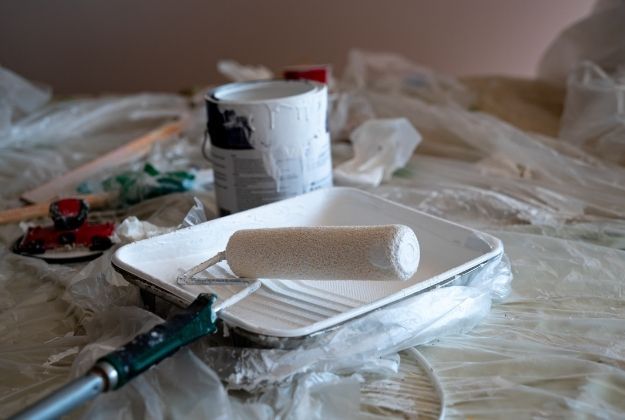How Do You Dry Clay Busts?
Drying clay busts properly is an essential step before adding finishing details or displaying the artwork. Clay contains water that must be slowly evaporated to avoid cracking or damage. If the drying process is rushed or uneven, the bust can slump or even explode from internal pressure. However, with careful monitoring and the right drying conditions, clay artists can successfully transition their busts from wet clay into durable, hardened sculptures.
The purpose of this guide is to provide clay sculptors best practices on how to thoroughly and evenly dry clay busts. We will cover estimating drying times, creating good air circulation, supporting busts, watching for drying cues, accelerating drying, sealing, and dealing with common issues. Following these drying guidelines will ensure clay busts make it through this vulnerable stage undamaged.
Time Needed for Air Drying
The time needed to completely air dry a clay bust depends on the size and thickness of the piece. Smaller and thinner busts made with low-fire clay can typically air dry within several days to a week. Larger or thicker busts may take 2-4 weeks to fully dry by air. Slower drying is actually advantageous for minimizing cracking and warping. As clay dries, the evaporation of moisture causes it to shrink. Too-rapid drying can create internal stresses that lead to cracks. Slow, even drying allows the bust to release moisture and shrink at a controlled pace for better results. For a bust 6-12 inches tall and 1-2 inches thick, expect around 7-14 days of drying time in a typical indoor environment before handling.
Creating a Drying Environment
When drying clay busts, it’s important to create an ideal environment that allows the clay to dry slowly and evenly. This prevents cracking or warping of the bust.
The ideal conditions are at room temperature between 65-75°F with relative humidity of 40-60%. Higher humidity slows drying, while lower humidity causes too-fast drying. Strive for a stable environment without fluctuations.
Set up a dedicated space for drying finished busts, away from direct sunlight or heating/cooling vents which can cause uneven drying. An unfinished basement, shed, or laundry room often provides adequate ambient temperature and humidity.
Allow space between busts for airflow. Position busts so air can circulate around the entire surface. Use fans to gently move air around drying busts, taking care not to point fans directly at the surface. Airflow is key for even, slow drying.
Supporting the Bust While Drying
Properly supporting the bust as it dries is crucial to avoiding any deformation or damage. As clay dries, it shrinks and can sag under its own weight if not supported. There are a few key methods for providing support:
Use a sturdy drying stand or rig. Construct a drying stand with a flat top out of wood, wire, or other rigid materials. The stand should support the neck and base of the bust. For full busts, use supports that cradle the back of the bust. Ensure the bust is level.
Fill hollow busts. If the bust is hollow, fill the interior with crumpled newspaper or other filler to help retain shape. Pack the filler tightly so it provides rigid internal support.
Prop heavy extremities. If the bust has any extended arms, legs, tails, etc., use extra support underneath these extremities to prevent sagging or damage.
In addition to methods, the materials used for support are also important. Avoid any materials that could stain or stick to the clay. Recommended support materials include:
- Wood boards, blocks, or dowels
- Polyester batting
- Dry cleaner’s foam
- Irregular shaped pieces of wood or stiff foam
With the proper drying methods and supports, the clay bust can fully dry without losing its shape or details.
Monitoring the Drying Process
Keeping a close eye on your clay bust as it dries is crucial for avoiding cracking and warping. Here are some tips for monitoring the process:
Check on your bust daily to look for any signs of trouble. Cracks most often appear in the first 1-2 weeks. Warping tends to happen gradually over several weeks.
Your bust is ready for the next steps when it is dry to the touch with no damp areas. Tap gently to listen for a uniform hollow sound. The clay should have lightened in color.
To prevent cracking:
- Maintain a cool, consistent drying environment.
- If cracks start, cover with plastic wrap to slow drying.
- Consider a drying aid like damp sand or vermiculite.
To prevent warping:
- Keep the bust supported and evenly weighted as it dries.
- Avoid direct sunlight or breezes on just one side.
- If warping begins, wet the convex side to soften the clay.
With attentive monitoring and quick response, you can successfully guide your bust through the drying process without damage.
Optional Accelerated Drying
If you want to speed up the drying process, there are a few options for accelerated drying of clay busts:
Using a dehydrator or oven: You can place the clay bust on a rack in a food dehydrator or oven set to a very low temperature (100-120°F) to gently remove moisture. This will dry the bust much faster than air drying, usually within several hours. Make sure to monitor the drying so the clay doesn’t overheat. Pros are very fast drying times. Cons are you need specialty equipment, risk of overdrying, and possible cracking.
Using a space heater or heat lamp: Position a space heater or heat lamp near the drying bust to warm the area and speed evaporation. Keep a moderate distance to avoid overheating the surface. Rotate the bust periodically for even drying. Pros are faster drying than air drying. Cons are the energy costs, need to monitor to prevent cracking, and uneven drying if not rotated.
With any accelerated drying method, go slowly and keep a close eye on the bust to avoid damage. Start with lower temperatures and increase gradually. Let the bust cool fully before sealing or handling further. Accelerated drying saves time but requires more equipment and diligent monitoring compared to air drying.
Applying a Sealant
Sealing a dried clay bust serves multiple important purposes. First, it helps protect the bust and prevents damage from handling. An acrylic sealant creates a protective barrier on the surface. Second, sealing provides an even finish and sheen. Unsealed clay can look patchy as different areas dry at different rates. The sealant helps even out the overall look. Finally, sealing prevents dust buildup in crevices and helps the bust stay cleaner longer.
There are a few common sealant options to choose from for clay busts:
- Acrylic resin
- Polyurethane
- Lacquer
Acrylic resin is often the best choice as it penetrates deeper into the clay for maximum protection. Polyurethane also works well but does not penetrate as deeply. Lacquer is easy to apply but provides less of a protective barrier.
To apply a sealant properly:
- Ensure the clay is fully dried and clean of any dust or debris before sealing
- Work in a well-ventilated area and follow all safety precautions for the sealant
- Apply 2-3 thin, even coats of the sealant using a soft brush, allowing each coat to fully dry before adding the next
- Avoid over-brushing as this can disturb the surface
- Allow the sealant to cure fully before handling the bust, usually 24-48 hours
With a few thin layers of a quality acrylic or polyurethane sealant, the clay bust will have an even, protected finish that prevents damage and keeps it looking its best for years to come.
Next Steps After Drying
Once your clay bust has completely dried, there are a few next steps to prepare it before decorating or painting. Here are some common next steps:
Light Sanding/Smoothening: Even when thoroughly dry, the clay may still have some small cracks or rough patches. Use a fine grit sandpaper or sanding sponge to lightly smooth out any imperfections. Be very gentle, as you don’t want to sand away any important sculpted details.
Priming for Painting: Most clay sculptors recommend applying a primer coat before painting the bust. Primers help the paint adhere better to the clay and last longer. Acrylic gesso is a common primer for painting clay. Apply a thin, even coat and let it fully dry before painting.
Sealing: You may want to apply a sealant like varnish or polyurethane to protect the finished piece, especially if it will be displayed outdoors or in a high-traffic area. Make sure the bust is completely dry before sealing, and apply coats sparingly according to the sealant directions.
With these preparatory steps done, your clay bust will be ready for the fun decoration process! Let your creativity shine with paint, glaze, mosaic tiles, or any embellishments you desire.
Common Drying Issues
Some common drying issues that can occur with clay busts include cracking, warping, and bubbling of the clay. Knowing what causes these issues and how to prevent them will help ensure your bust dries properly.
Cracking
Cracks can form on the surface of clay as it dries if the clay is allowed to dry too quickly. This most often occurs when drying clay in conditions that are too warm, dry, or windy. Cracking can be prevented by slowing down the drying process and maintaining even, consistent conditions.
Warping
Warping happens when one part of the clay dries faster than another, causing the clay to bend or twist out of its original shape. This is usually caused by uneven drying conditions. To prevent warping, make sure to dry the bust very slowly and evenly. Rotate the bust periodically so all sides dry at the same rate.
Bubbling
Bubbles or blisters on the surface of the clay are caused when water gets trapped between layers of clay as it dries. To avoid bubbling, use clay of a consistent thickness and density. Smooth layers of added clay perfectly into the existing clay. Allow drying between additions to remove excess moisture.
Conclusion
Drying a clay bust properly requires care, patience, and attention to detail. Rushing the process can lead to cracking or other damage. Give your bust the time it needs to dry thoroughly all the way through before moving to finishing steps.
Creating a good drying environment, supporting the bust, and monitoring progress are all key. The ambient temperature and humidity will impact drying time. Keep your bust out of direct sunlight and avoid drafty areas.
While air drying over several weeks is ideal, you can accelerate drying if needed using a food dehydrator or other gentle heating source. Take care not to overdry. Applying a sealant at the end will help stabilize the clay.
Allow your bust the required drying time for best results. The patience required will pay off when you complete the finished piece without defects caused by rushed drying. With care and attention, your clay work will come out of the drying process ready for finishing and display.


